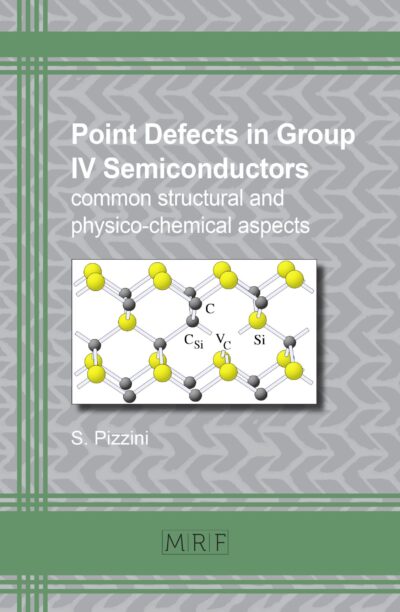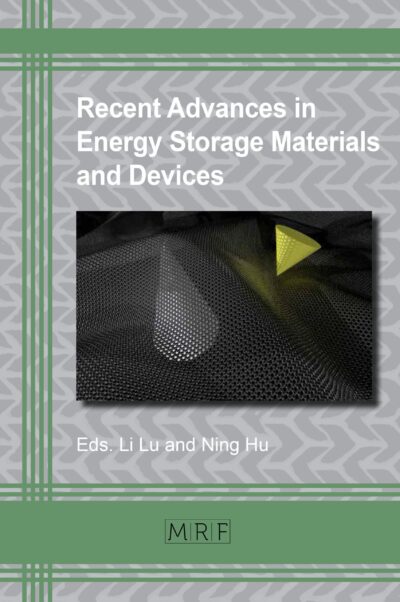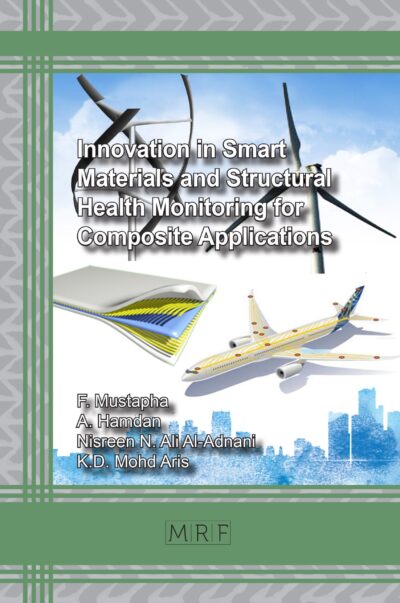Organic Pollutants in Wastewater I
Methods of Analysis, Removal and Treatment
Eds. Inamuddin, Abdullah M. Asiri, Ali Mohammad
Materials Research Foundations Volume 29
Publication Date 2018, 362 Pages
Print ISBN 978-1-945291-62-3 (release date April 1st, 2018)
ePDF ISBN 978-1-945291-63-0
DOI: 10.21741/9781945291630
Wastewater represents an alternative to freshwater if it can be treated successfully for re-use applications. Promising techniques involve photocatalysis, adsorption, nanocomposites, and membranes. The book focusses on the following topics:
Effluent detoxification and degradation kinetics of organic dyes using Fenton and photo-Fenton processes. Degradation of methylene blue using nanocomposites as a potential photocatalyst. Agricultural and agro-industries based wastes as low-cost biosorbents. Use of carbon quantum dots (CQDs) for photocatalytic degradation of organic pollutants. Detection, determination and removal of phenolic compounds from wastewater. Decomposition of organic dyes via photocatalysis. Oxide-semiconductor nanomaterials for photocatalytic wastewater purification. Photocatalytic efficiency of various ZnO composites for degradation of organic pollutants. TiO2 based nanocomposites. Membrane filtration processes for the removal of organics from industrial wastewater.
Keywords
Wastewater Treatment, Organic Pollutants, Organic Dyes, Photocatalysis, Nanocomposite Photocatalysts, Photocatalytic Degradation, Adsorption, Membrane Filtration, Fenton Processes, Biosorbents, Phenolic Compounds, Carbon Quantum Dots, Methylene Blue Degradation, ZnO Composites, TiO2 Based Nanocomposites
Table of Contents
Preface
Green Applications of Magnetic Sorbents for Environmental Remediation
Tiyasha Kanjilal, Chiranjib Bhattacharjee
Photocatalytic Decomposition of Organic Dyes
Zubera Naseem, Haq Nawaz Bhatti, Munawar Iqbal
Effective Degradation of Methylene Blue using ZnO:Fe:Ni Nanocomposites
P. Dhiman, G. Kumar, K.M. Batoo, A. Kumar, G. Sharma, M. Singh
Use of Agricultural Solid Wastes as Adsorbents
S. Naga, A. Bhardwaja, P. Pandeya, M. Arorab, J.N. Babu
Carbon Quantum Dot Composites for Photocatalytic Degradation of Organic Pollutants
G. Sharma, S. Sharma, A. Kumar, P. Dhiman, D. Jamwal, D. Rana, R.P. Dwivedi, G.T. Mola
Methods for the Detection, Determination and Removal of Phenolic Compounds from Wastewater
Q. Kanwal, D.N. Iqbal, M. Iqbal
Photocatalysis: Present, past and future
A. Manikandan, E. Manikandan, S.Vadivel, M.Kumaravel, D. Maruthamani,
S. Hariganesh
Photocatalytic Decomposition of Organic Dyes
D. Rana, A. Soni, G. Sharma, A. Kumar, D. Jamwal, A. Katoch
Photocatalytic Degradation of Organic Pollutants by Zinc Oxide Composite
D. Jamwal, J.Y. Park, A. Kumar, G. Sharma, D. Rana, A. Katoch
TiO2 Based Nanocomposite for Photocatalytic Degradation of Organic Pollutants
D. Sud, N. Sharotri
Industrial Water Pollution and Treatment – Can Membranes be a Solution?
C.G. Lopresto, D. Mukherjee, K.A.B. Zabala, V. Calabro, S. Curcio, S. Chakraborty
Keywords 352
About the editors 353
https://en.wikipedia.org/wiki/Persistent_organic_pollutant
ProtoView by Ringgold Clean Data
Chemists from Asia and Africa explore organic pollutants in wastewater, how to detect and measure them, and how to remove and treat them. Among their topics are green applications of magnetic sorbents for environmental remediation, the effective degradation of methylene blue using zinc oxide:iron:nickel nanocomposites, carbon quantum dot composites for the photocatalytic degradation of organic pollutants, the photocatalytic decomposition of organic dyes, titania-based nanocomposites for the photocatalytic degradation of organic pollutants, and whether membranes can be a solution to industrial water pollution and its treatment. This is the first of two volumes. Annotation ©2018 Ringgold Inc. Portland, OR (protoview.com)
Ringgold Keywords
Organic pollutants, Wastewater pollution, Environmental remediation, Nanocomposites, Photocatalytic degradation of pollutants, Chemistry














